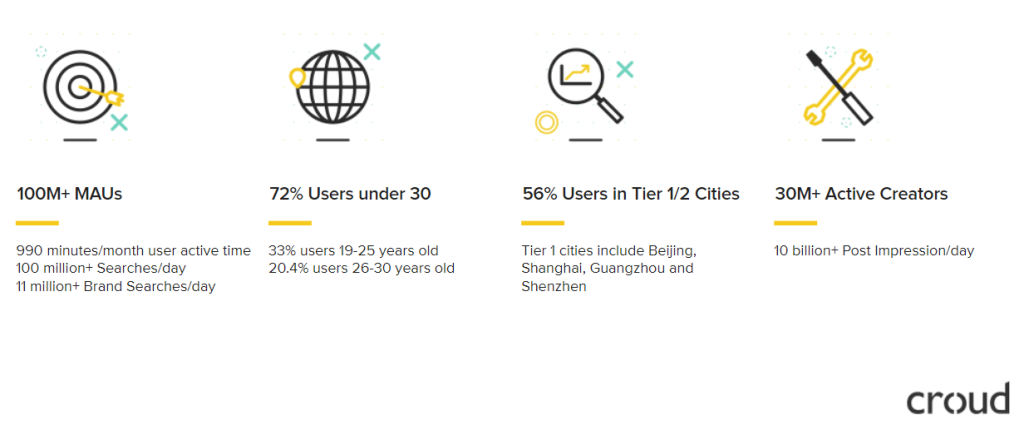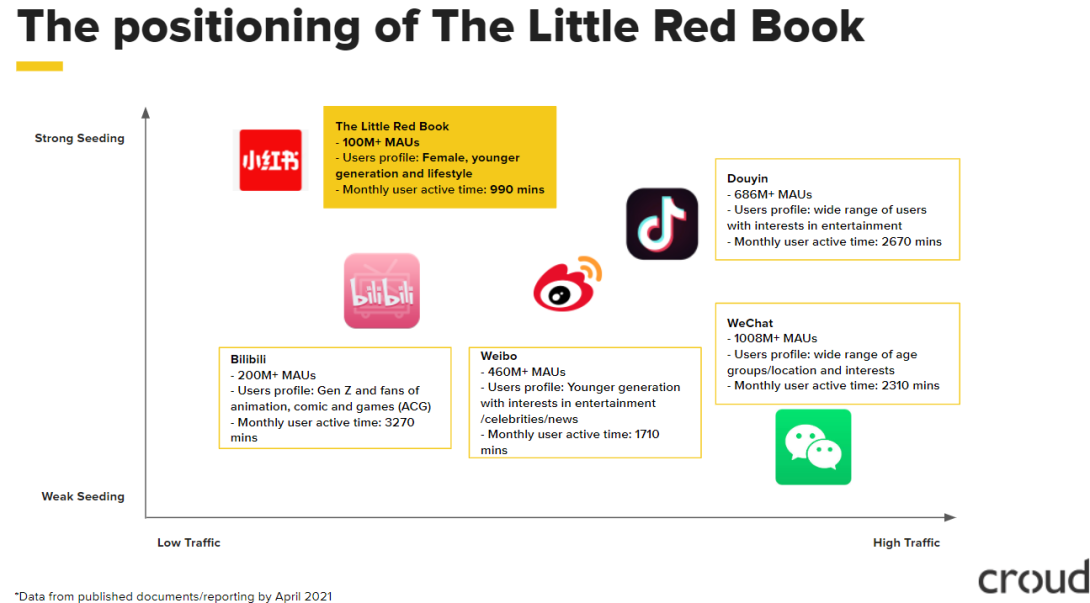Introduction
China’s e-commerce industry is forecast to reach ¥19.6 trillion ($3.0 trillion) by 2024), with a significant part of that growth coming from the fashion and beauty industry. Apps like Little Red Book (Xiaohongshu in Chinese Pinyin, hereafter abbreviated as RED) which help shoppers to find, review and buy fashion and beauty products, represent a huge opportunity for brands to build and strengthen their presence in this lucrative market.
RED is first and foremost a content sharing platform, but is often referred to as a hybrid of Amazon, Pinterest and Instagram, as it combines shopping features, a focus on user generated content, and trusted word of mouth reviews.
Often hailed as the Chinese Instagram, it features much of the same content around lifestyle and fashion. To a certain extent, the comparison is reasonable, but this online community also enjoys many other unique features and advantages that shouldn’t be ignored when entering the Chinese market. In part one, of our part two series, we will help you to understand, launch and thrive on this platform.
What is RED (Xiaohongshu)?
RED is split up into two sections; e-commerce and user community. Upon opening the RED homepage you’ll immediately notice that unlike Instagram, you’re greeted with the default ‘Explore’ feed which is curated with content from random users or sponsorships.
What appears on this feed is selected and recommended by algorithms based on your interests and behaviours. If you want to change this because you only want to see content from people you follow, you’ll need to flip to the ‘Follow’ page manually on the top of the screen.
Like Instagram, users can interact with what appears through liking, saving, and commenting on content. As trust is a key component on the platform, reviews are never anonymous and users are rewarded for commenting advice or tagging their trusted products.
The content presentation format on RED also differs slightly to Instagram, for example, imagery, video and live stream content are presented as static thumbnails which sit within the two feed columns that are alongside the short titles. Videos and live streams only start playing in full screen mode when clicked.

The Little Red Book already has an integrated and established e-commerce marketplace built into its platform which can be accessed by clicking ‘Store’ in the middle of the navigation footer. All listed products come from registered individual or brand stores which have been equipped with comprehensive e-commerce functionalities like Tmall or JD.com.
Even though RED’s e-commerce scale cannot compete with these giants, it still holds a special place in the ecosystem for its strong product seeding ability, also known as ‘plant grass’ (种草). This mainly comes down to RED’s wide-range of branded and product content that can sow the seeds in consumer mindsets, which shortens the conversion path.

Why RED is the right fit for your business
With 100 million monthly active users, RED is most popular among young female users in China, who are living in tier one or two cities (which tend to have a higher disposable income). This user demographic perfectly matches the Gen-Z and millennial audiences many brands want to target.
As reported by RED in its Little Red Book Marketing Handbook, the top ten content categories include fashion, beauty, food, travelling, entertainment, home, mothers, culture, creativity and education - which reflects active users preferences. Brands from those categories, particularly high end beauty brands given the demographic, are the most active on this platform.

There are currently around 8,000 verified brands on the platform, and if those categories are relevant to your business and its target audience, RED might well be a go-to platform for your business to drive brand awareness and product seeding. The platform would also connect you to its 4,800 influencers, which brands can find through searching content tags, and review their suitability through the influencers’ stats provided such as likes, number of hits and fan count.

Watch this space for our next blog which will outline how to set up a RED business account and explore the best content and strategy for your brand to make the most of this Chinese platform. If you have any further questions about the platform, please get in touch with Croud’s APAC team.


